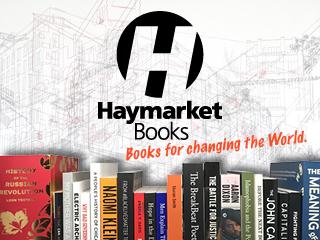Community cut out of Barrio Logan
DURING THE spring and summer of 2007, there were attempts to form a "community inclusive" Barrio Logan Community Planning Group in the city of San Diego.
It was hoped that the formations of a community-planning group would enable the community to give direct contributions to the form and function of the new plan being created for Barrio Logan.
It seems, as stated in a 2007 report, that some 86 percent of Barrio Logan is Latino, and the super-majority of that population is working class. However, without the support of the local councilperson (who later recused himself because, apparently, he has a financial interest in Barrio Logan) for a "Barrio Logan Community Planning Group," it seemed there was no way for this group to be constructed nor sanctioned by our city council.
It is more fully realized from a planning group made up of community members who can, we believe, actively insert community-contributed models/themes into the forming community plan, vote to reject aspects and demand changes to aspects of, or the whole of, a newly forming community plan.
The community has had no real input nor method to refuse the apparently already drawn-up and in-print "plans." From our observations, the more positive aspects of redevelopment--perhaps better schools, perhaps safer neighborhoods with less crime, perhaps more parks and community areas (no solid or sure answers are given by city representative)--are projected onto the few community members in attendance.
The more negative aspects of redevelopment remain absent from the city-sponsored presentations: increased rents, increased taxes associated with "Business Improvement Districts," increased population density and all the things having more people packed into smaller and smaller spaces create--and the gentrification which seems to always follow redevelopment.
Personally, I've walked this neighborhood many times over the last 15 years, and not once in my many interactions with the people did any one of them tell me, "We want redevelopment." Not once did any one of them say, "We want higher rents or an increase in population."
Therefore, I was surprised when a city planner told me that I was not saying the truth when stating that the people (very few of which even attended this meeting) were afraid of redevelopment.
Perhaps she and I had talked to different people? No, it seems we were talking to many of the same people, but perhaps only the more positive aspects were presented in her interviews with the people: "Wouldn't you like new homes?"; "Wouldn't you want better schools for your children?"; "Wouldn't you want safer neighborhoods?"
I, in my interviews, included other aspects of redevelopment such as: "Rents will likely increase, so that they are more equal with other more affluent areas of our city"; "It is likely that no new single-family homes will be built, and few of your currently existing single-family homes will remain after redevelopment"; and "Sometimes as much as 85 percent of the pre-development population is no longer living in their homes within five years post-redevelopment."
It seems community members are not so "pro-redevelopment" when these more negative aspects are presented along with the more positive.
WHERE DID these plans that are being presented come from? Did the community members themselves design and construct the "city of villages" idea that seems to be the model being pushed in the controlled-community interactions? Where did the money come from that paid to make the color presentations, power-point presentations, maps, drawings and displays?
These plans, being presented at the Stakeholders' Committee meetings by the City Planning Department as the "community plan ideal"...did the community in attendance create them? It appears that the community did not form nor actively contribute to the physical structure of these plans. How could it, when it is clear that these plans were already formed well before the first Stakeholders' Committee meeting?
Does our city council, those who are the "real drivers of redevelopment" in our city, really think to bypass Council Policy 600-05, Council Policy 600-09 and Council Policy 600-24? As I read these policies, I see no allowance for anything other than a community-planning group. I see no method or allowance for a "Stakeholders' Committee." Exactly where do these policies allow the city council to overlay a Stakeholders' Committee in the place of a Community Planning Group?
The existing populations of Barrio Logan will likely become the next victims of redevelopment/gentrification. The single-family home is the single-best and largest investment for the average working-class citizen of the United States, and removal of these wealth resources from workers will contribute to a condition of debt peonage akin to credit slavery.
Wages and benefits realized from a service industry job will not cover the cost of living in San Diego; extended families in, and the community of, our barrio will likely become "outdated," then "updated" and, finally, "redeveloped."
Redevelopment appears to have functioned more as a vehicle for the removal of the stored and potential wealth out of the control of the working men and women of the community and into the already wealthy and powerful control of the developers/redevelopers.
I am no city planning "professional," but I have seen the post-development/redevelopment effects on the pre-redevelopment/development populations. We do not believe it is right, fair or just that people can be pushed from their neighborhoods to try to find housing in an ever-more critical housing environment.
Gregory Morales, Mexican American Political Association, San Diego


